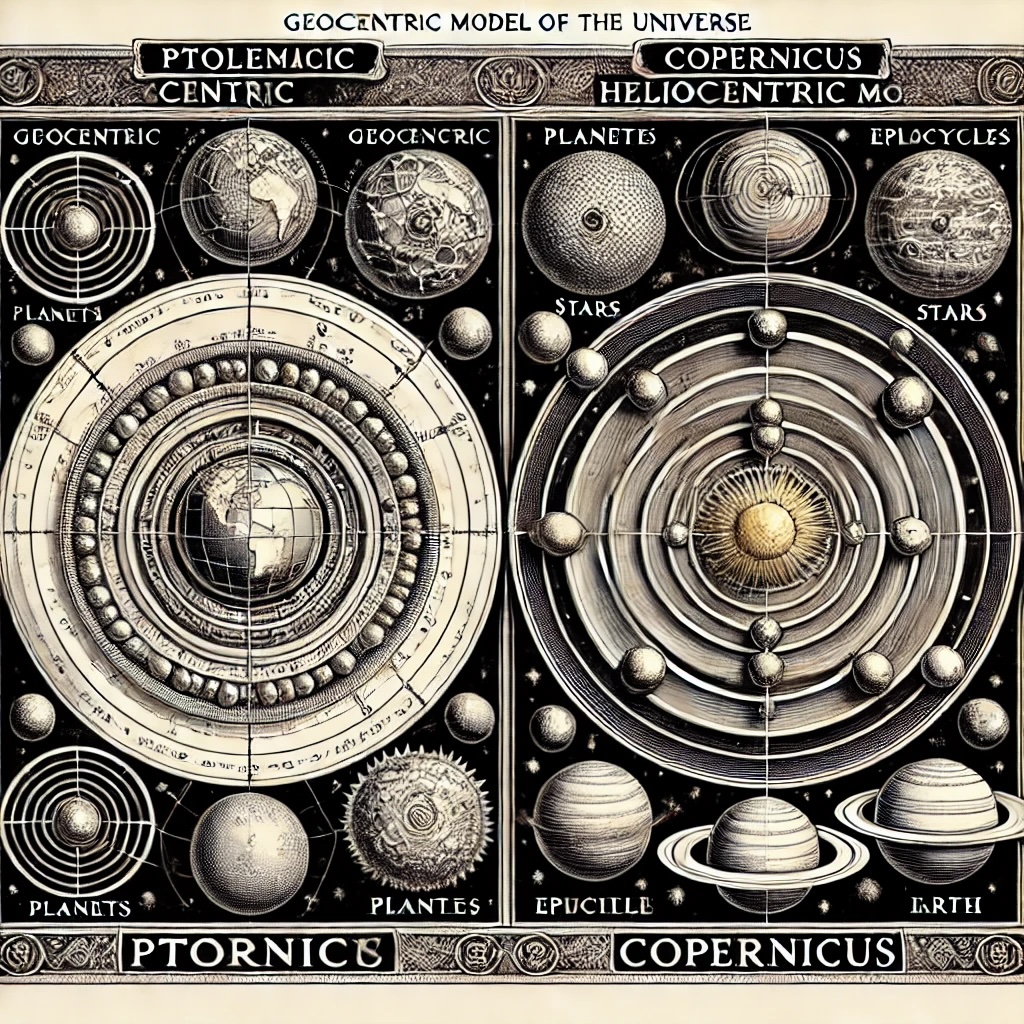
In 1543 Nicolaus Copernicus published De revolutionbu orbium coelestiium. This work set out to prove that the earth and the other planets circle around the sun. This was in direct contrast to the accepted theory that everything circled the earth.
In 1543, Nicolaus Copernicus published his groundbreaking work, De revolutionibus orbium coelestium (On the Revolutions of the Heavenly Spheres). This work is considered one of the most important contributions to the scientific revolution, as it fundamentally challenged the long-held geocentric model of the universe, which positioned the Earth at the center, with all other celestial bodies, including the sun, orbiting around it. The geocentric model had been widely accepted for centuries, deeply rooted in the teachings of Aristotle and refined by Claudius Ptolemy in the 2nd century CE.
Copernicus, however, proposed a heliocentric model, in which the Earth and other planets revolved around the Sun. This revolutionary idea was radical for its time and directly contradicted the prevailing beliefs held not only by the scientific community but also by religious authorities. In an era where the teachings of the Catholic Church held significant sway over intellectual and academic life, any challenges to the established view of the cosmos were considered not just scientific disputes, but potentially dangerous theological assertions.
The traditional geocentric theory suggested that the Earth was the stationary center of the universe and that all celestial objects, including the planets and stars, moved in perfect circles around it. This view aligned with certain biblical interpretations and reinforced the idea that humanity, and by extension the Earth, held a central and privileged position in God’s creation. The Ptolemaic system, which was the most developed version of geocentrism, relied on complex models involving epicycles and deferents to explain the observed movements of the planets, especially their retrograde motion.
Copernicus’s heliocentric model provided a simpler, more elegant solution to these celestial movements. By placing the Sun at the center of the universe and asserting that the Earth rotated on its axis and orbited the Sun, Copernicus could explain the apparent retrograde motion of planets like Mars without resorting to complicated epicycles. In this model, the retrograde motion was simply an optical illusion that occurred when Earth, moving along its orbit, overtook the slower-moving outer planets.
Although Copernicus’s model was mathematically compelling, it did not immediately replace the geocentric system. Several reasons contributed to this. First, the heliocentric theory still did not have irrefutable observational evidence, as it required sophisticated instruments and calculations that were not yet available in the mid-16th century. Second, the model conflicted with deeply ingrained philosophical and religious views about the nature of the universe. The Catholic Church and many scholars rejected the idea that the Earth was not the center of creation, as it seemed to diminish humanity’s unique place in the cosmos.
In the long run, however, De revolutionibus set the stage for future advancements in astronomy. Figures like Johannes Kepler and Galileo Galilei built upon Copernicus’s ideas, refining them and providing the empirical evidence that eventually cemented the heliocentric model as the foundation of modern astronomy. Copernicus’s work is now recognized as a pivotal moment in the history of science, marking the beginning of a shift away from medieval thinking and towards the development of the scientific method.
 >
>